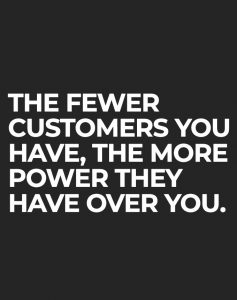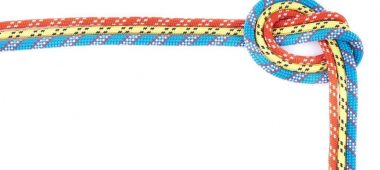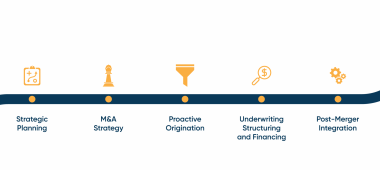You spent a lifetime building your business: don’t neglect its value.
Whether you plan to sell your business in a year, five years or don’t plan to sell at all, building a sale-ready business not only improves valuation but also minimizes risk and adds real value. Even if your exit strategy involves handing your business over to your kids or employees when you retire, it will make this transition that much easier.
As a small business owner, you should always be prepared for the unexpected. Ignoring the key factors that drive your valuation can have dire consequences.
John operated a successful construction business doing $25 million in revenue. He owned the company for thirty-three years. With several years until retirement, John had no intention of selling his business and hoped to hand it over to his two young sons eventually.
John passed suddenly and unexpectedly, leaving his sons in charge. Both were recent college graduates with limited experience running a business. John’s sons were unable to recreate their father’s success and, after two years, were forced to liquidate the business.
What caused a business that, up to that point, had been very successful, to fall apart so quickly without its founder? Why was the business unable to find a willing buyer?
Nature of Revenues

Not all revenues are created equal. Traditionally, businesses have operated on either a transactional revenue or project-based revenue model. Transaction revenue requires a company to expend effort and resources for every sale it makes. This model fails to capitalize on the resources spent to acquire new customers because each transaction is an independent event that does not create a continuous revenue stream.
Project-based revenue is generated by contracting to complete one-time projects. While this model can be lucrative in the short-term, it creates many long-term challenges. Businesses that depend on project-based revenue often experience inconsistent income. And they must expend time and money to maintain relationships with past clients. While project-based businesses may have repeat customers with successive projects, this type of revenue is highly unpredictable. Potential buyers will significantly discount projections based on this type of revenue.
A recurring revenue model provides consistent and predictable income while simultaneously increasing customer retention. Companies with recurring revenues are more likely to obtain premium valuations, some times as much as 2x project revenue.
You may think that your business does not lend itself to this type of revenue model. “Subscriptions may work for Netflix, but I’m in manufacturing.” The truth is, the subscription-based model has made its way into every industry you can think of. Many manufacturers make more money in selling replacement parts and aftermarket service than they do selling the original goods. Perhaps the most interesting example is Michelin Tires. Rather than selling tires outright to trucking fleets, Michelin uses a price-per-mile payment method that offers the added benefit of continued service to its customers.
Customer Dynamics
 Perhaps John’s biggest problem was that he was heavily reliant on a few customers for a large portion of his revenues. Potential buyers will be rightly concerned if one customer represents more than 10-20% of your total sales, as your financials will be severely impacted if they were to go bankrupt or switch to a competitor. Buyers have similar concerns when a few customers collectively represent a meaningful portion of sales—40% or higher. Customers with too much influence have power over you and will likely use that power to lower prices or demand specific features or services tailored to their needs, increasing your costs.
Perhaps John’s biggest problem was that he was heavily reliant on a few customers for a large portion of his revenues. Potential buyers will be rightly concerned if one customer represents more than 10-20% of your total sales, as your financials will be severely impacted if they were to go bankrupt or switch to a competitor. Buyers have similar concerns when a few customers collectively represent a meaningful portion of sales—40% or higher. Customers with too much influence have power over you and will likely use that power to lower prices or demand specific features or services tailored to their needs, increasing your costs.
If this is the case with your business, don’t expect to find buyers willing to pay what your company is worth on paper.
Like John’s sons, you may find that the best you can do in this case is to liquidate your assets and shut the business. At best, you will receive an offer contingent upon those large customers remaining with the business for an extended period after the sale.
Earnings History
A history of stable earnings demonstrates reliability and predictability—two factors that are highly sought after by both financial and strategic buyers. Most valuation methods are based on cash flow. A consistent increase in cash flow shows buyers that this trend should continue, increasing the valuation of a business for sale.
John experienced two issues with earnings stability. First, his business took a major hit during the Great Recession, which investors often view as a proxy for financial resilience going forward. To keep the business afloat, John had to lay off several employees and dip into his personal savings. Second, while revenue was slightly up, profitability spiked in the past year. Potential buyers questioned whether this trend would continue post-sale or whether there were convenient accounting adjustments. Most buyers understand that while profitability can be manipulated for a brief time by shifting the timing of revenue and expenses, it is very difficult to hide over the mid to long-term.
Industry Defensibility
The fewer barriers to entry your industry has, the more competitive it is, and the lower your business will be valued. It is critical to demonstrate a sustainable competitive advantage, or, as Warren Buffet calls it, a wide “moat.” The more it costs potential competitors to enter the industry, the higher the value of your business.
Declining margins, resulting from pricing pressure is a tell-tale sign of commoditization and a lack of competitive advantage. While many companies experience strong revenue growth while the industry is expanding, during recessions, these businesses are particularly vulnerable.
Key-man Risk
Business owners should ask themselves, “if I disappeared tomorrow, could my business function without me?” If the answer is no, buyers will rightly be concerned about the level of disruption your business will experience after you are gone.
John experienced a “savior complex,” common in business founders. Any time a serious problem arose, he felt the need to solve it himself. Another issue was that a large portion of sales came from customers he personally interacted with. Buyers are generally concerned that significant business and profitability could be at risk if that essential individual disappears to the Caribbean or gets ill.
 Lack of Team Strength and Culture
Lack of Team Strength and Culture
A micromanager owner often results in weak middle-management teams that struggle to function independently. John never developed a formal organizational structure, as he was quick to solve problems as they emerged. This resulted in poorly defined roles and managers who did not take ownership of their work. Moreover, this is frequently associated with high employee turnover. Hiring, training, motivating, and empowering the best possible employees—especially managers—will create a strong culture that can survive and thrive in its owner’s absence.
From a buyer’s perspective, a weak team means additional operational work and risk, which results in low valuations.
Paying attention to these factors can have an outsized impact on the valuation of a business for sale. Having your business evaluated by a professional experienced in transition solutions will better prepare your business for any opportunities that come your way.
















